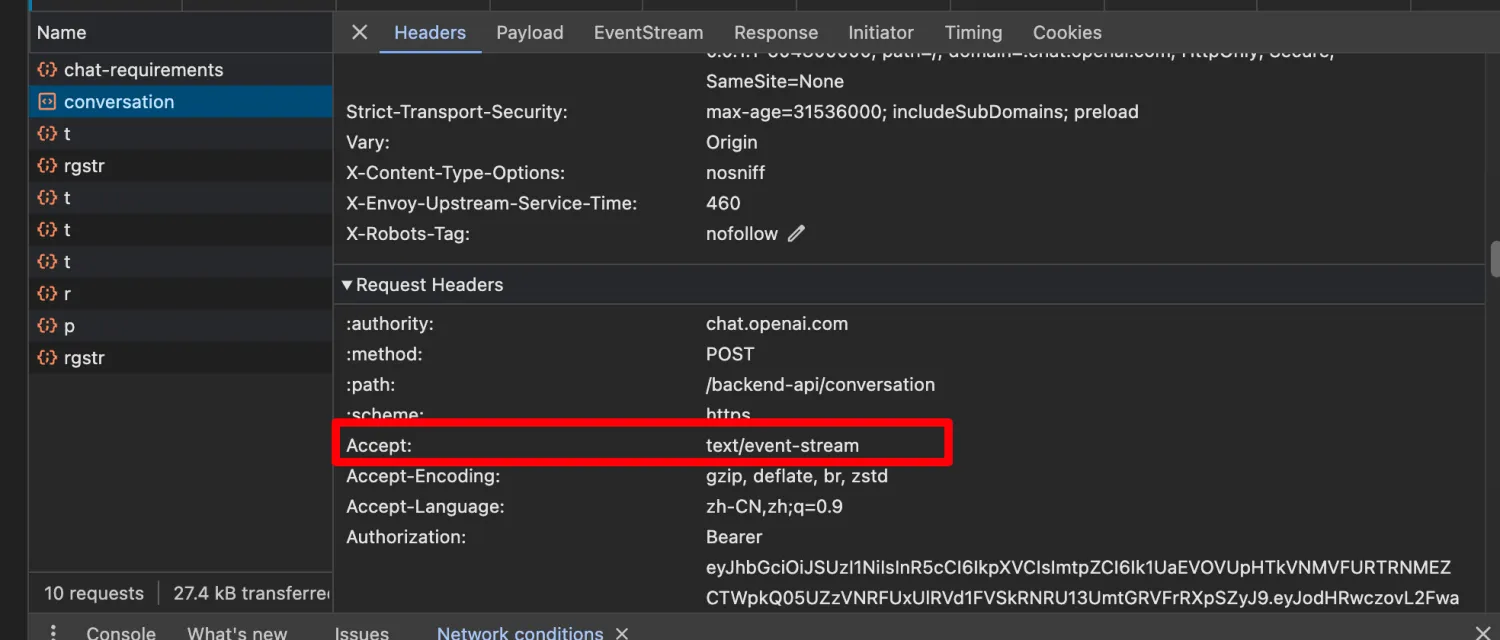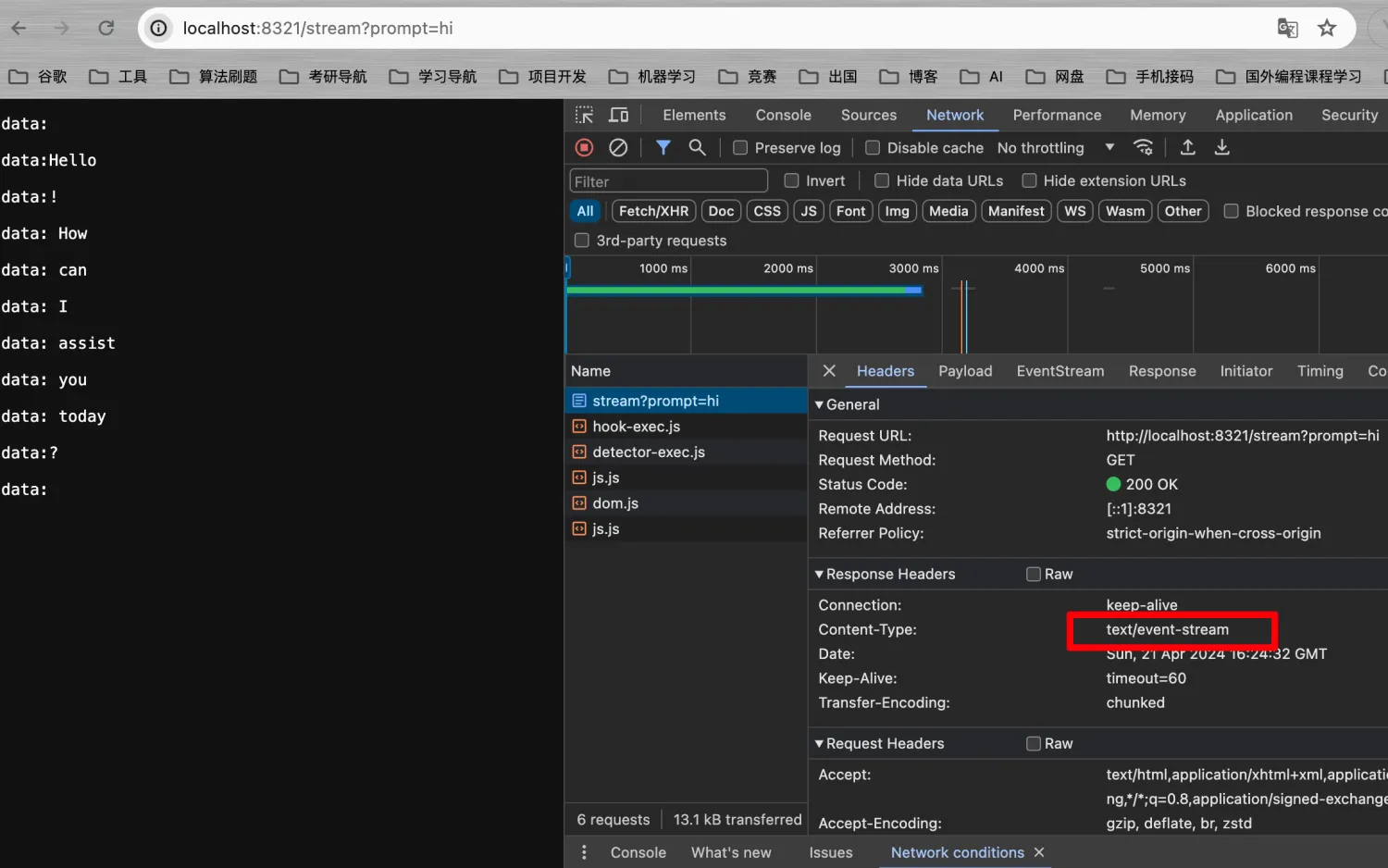流式对话
在快速入门那节中,演示了阻塞式的聊天调用,一般来说,由于网络请求或AI生成的文本过长等因素,会导致阻塞式的聊天调用对用户的体验非常不好。而目前对于对话式的应用场景,主流的调用方式基本采用的是流式对话。什么是流式对话?流失对话的核心就是流式传输,AI的响应数据是一点一点传过来的,不用等AI将文本全部生成出来了才传过来。一定程度上能够提高使用上的响应速度,给用户一个非常好的体验。
目前流式对话的实现手段主要有两种:
SSE
和
WebSocket
协议。SSE是基于Http实现的一种服务端向客户端推送消息的技术,WebSocket则是基于TCP协议实现的全双工通信技术。SSE的实现较为简单,而WebSocket较为复杂,且后者对资源的占用率很高。OpenAI官网采用的是SSE实现的。

Spring AI中流式对话接口采用的是Spring WebFlux异步网络框架实现的,WebFlux底层默认采用Netty,因此,如果需要了解Spring AI流式对话底层的实现,则需要对异步网络编程有一定的了解。当然,这些并不妨碍我们进行简单的调用。
packagecom.ningning0111.controller;importorg.springframework.ai.chat.ChatClient;importorg.springframework.ai.chat.StreamingChatClient;importorg.springframework.http.MediaType;importorg.springframework.web.bind.annotation.GetMapping;importorg.springframework.web.bind.annotation.RestController;importreactor.core.publisher.Flux;@RestControllerpublicclassChatController{privatefinalChatClient chatClient;privatefinalStreamingChatClient streamingChatClient;publicChatController(ChatClient chatClient,StreamingChatClient streamingChatClient){this.chatClient = chatClient;this.streamingChatClient = streamingChatClient;}@GetMapping("/demo")publicStringdemo(String prompt){String response = chatClient.call(prompt);return response;}// 流式调用 将produces声明为文本事件流@GetMapping(value ="/stream",produces =MediaType.TEXT_EVENT_STREAM_VALUE)publicFlux<String>stream(String prompt){// 将流中的内容按顺序返回return streamingChatClient.stream(prompt).flatMapSequential(Flux::just);}}

版权归原作者 PG Thinker 所有, 如有侵权,请联系我们删除。